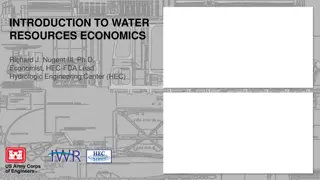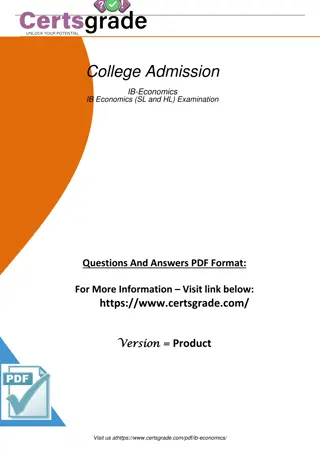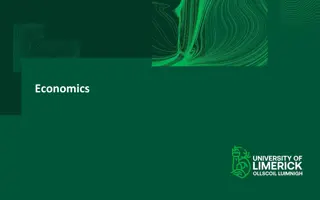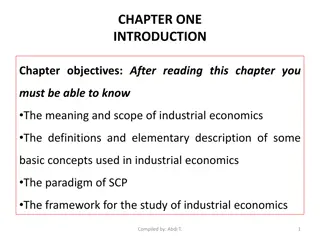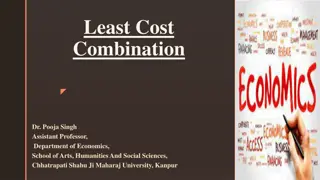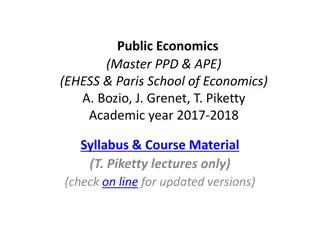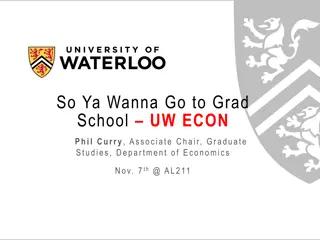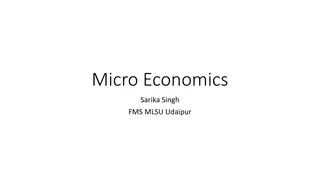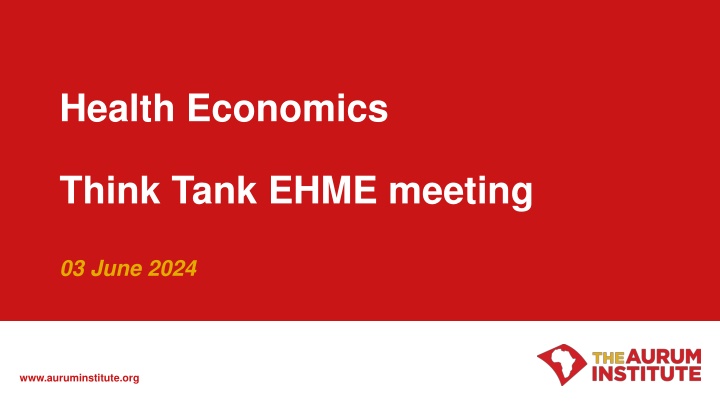
Significance of Health Economics in Healthcare Resource Allocation
Health economics plays a crucial role in determining how resources are distributed in the healthcare sector, analyzing the costs, benefits, and outcomes of healthcare services to ensure efficiency and inform policy decisions. This article explores the concepts of technical efficiency and allocative efficiency, showcasing their importance through practical examples in TB program planning and resource allocation strategies.
Download Presentation

Please find below an Image/Link to download the presentation.
The content on the website is provided AS IS for your information and personal use only. It may not be sold, licensed, or shared on other websites without obtaining consent from the author. If you encounter any issues during the download, it is possible that the publisher has removed the file from their server.
You are allowed to download the files provided on this website for personal or commercial use, subject to the condition that they are used lawfully. All files are the property of their respective owners.
The content on the website is provided AS IS for your information and personal use only. It may not be sold, licensed, or shared on other websites without obtaining consent from the author.
E N D
Presentation Transcript
Health Economics Think Tank EHME meeting 03 June 2024 www.auruminstitute.org
What is health economics & why it matters What is Health Economics? The study of how resources are allocated within the healthcare sector. It examines the costs, benefits, and outcomes of healthcare services and interventions to their efficiency and inform policy decisions. Why Does Health Economics Matter? Resources are scarce but healthcare needs are endless. We need to allocate resources efficiently to the right interventions. Two key concepts used in health economics are technical efficiency and allocative efficiency www.auruminstitute.org
Technical efficiency doing the rights things Imagine you have $1 to spend on a contact tracing programme for TB and have 2 options You care about the number identified and speed with which they are found We also know the government is willing to pay an extra $1 to find one more TB case. Standard CHWs: o Cost: $0.50 per case identified & Identify 1 TB case per month (yield of 2 cases per dollar) Mobility-Enhanced CHWs: o Cost: $1 per case identified, identify 2 TB cases per month (yield of 2 cases per dollar) o Cost-Effectiveness: $0.50 per additional TB case detected, below the cost-effectiveness threshold of $1 Mobility-enhanced CHWs provide better outcomes per dollar by detecting TB cases more quickly and efficiently, making them the more technically efficient choice. www.auruminstitute.org
Allocative efficiency doing things right Imagine you have a budget of $1 to allocate across various TB interventions below: Clinic-Based Screening: Identify TB cases early. i. Contact Tracing: Trace and test contacts of TB patients. ii. Reducing iLTFU: Ensure patients remain in care. iii. Improving Adherence: Ensure patients complete treatment. iv. Focusing on PTLD: Monitor and treat post-treatment lung disease. v. Intervention to Reduce Patient Costs: Reduce financial barriers to treatment. vi. TPT Programme: Preventive therapy for high-risk populations. vii. Allocative Efficiency: How do we distribute this dollar to achieve the greatest overall health benefit? We allocate the most resources to the interventions that save the most lives, improve health outcomes, and provide the highest value for the population. www.auruminstitute.org
COUNTY B COUNTY A 150 90 Millions Millions 80 130 4 4 6 70 6 110 60 Incremental costs ($) 90 Incremental costs ($) 50 5 70 1 40 7 3 5 1 50 30 20 30 7 3 10 10 2 2 0 -10 0 100 200 300 400 500 600 700 800 0 20 40 60 80 100 120 140 160 180 DALYS averted DALYS averted COUNTY D COUNTY C 110 1 200 Millions Millions 4 90 1 000 6 4 6 70 800 Incremental costs ($) Incremental costs ($) 3 7 50 600 7 3 30 400 5 1 10 200 2 5 1 0 200 400 600 800 1 000 1 200 2 - 10 0 0 1 000 2 000 3 000 4 000 5 000 6 000 DALYS averted www.auruminstitute.org DALYS averted
Health economics and modelling Planning ahead by using current data to predict cost-effectiveness to guide investments. Maximise value by achieving the best allocative and technical efficiency. www.auruminstitute.org

